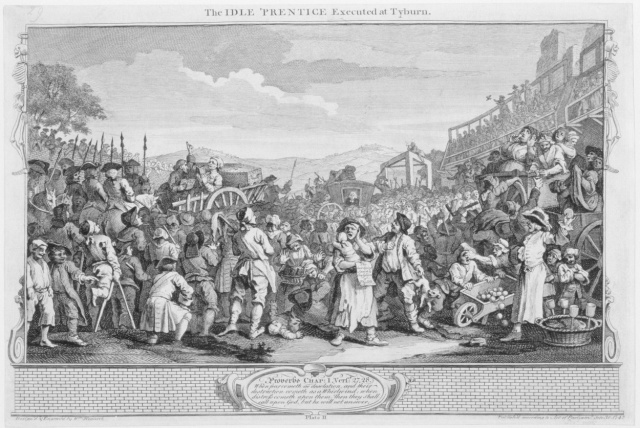William Hogarth (1697-1764)
‘Industry and Idleness XI: The Idle ’Prentice Executed at Tyburn’ (October 1747)
[Second state] Etching and engraving on copper; printed on laid paper.
The last two plates are slightly larger than the rest of the series; they represent the public apotheosis of the two men’s careers, and each has a grand finale before the city crowds. Here the scene is the intersection of Tyburn Road and Tyburn Lane, where the famous triple gallows stood; in the background are the Highgate and Hampstead Hills. The customary time of execution was 8 a.m. on a Monday; most shops and businesses closed and a multiple hanging was sometimes attended by 100,000 people.
Tom Idle is being driven to the scaffold in the same cart as his coffin and a demonstrative Methodist preacher, whose dire words and the imminence of his own death seem to have filled the condemned man with horror. They are preceded by the Ordinary of Newgate, whose duty it was to comfort the prisoner at the hour of his execution. The ‘Ordinary’s Account’, published later, was always a bestseller, but an alternative story – ‘The last dying Speech and Confession of Tho. Idle’ – is already being peddled here by the ballad-seller in the foreground, even before Idle is dead. Hogarth implied that there were two ways of interpreting this scene: one was through the moralistic chronicle of the Ordinary, which would emphasise the inevitable moral decline from early misdemeanour, through crime, to the gallows (much as in Hogarth’s own narrative); the other was through the more subversive ballad which might rescue the sinner and make him into an heroic figure for the populace.

You must be logged in to post a comment.